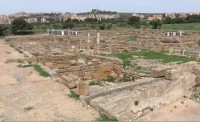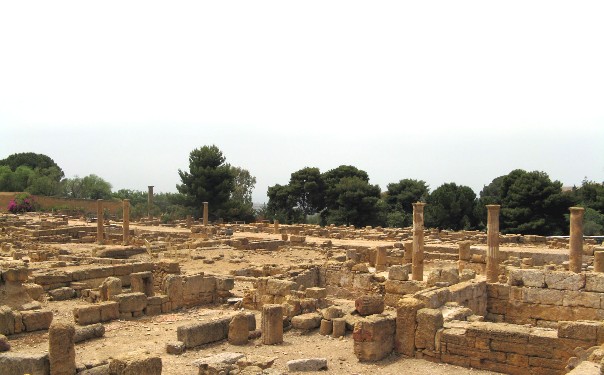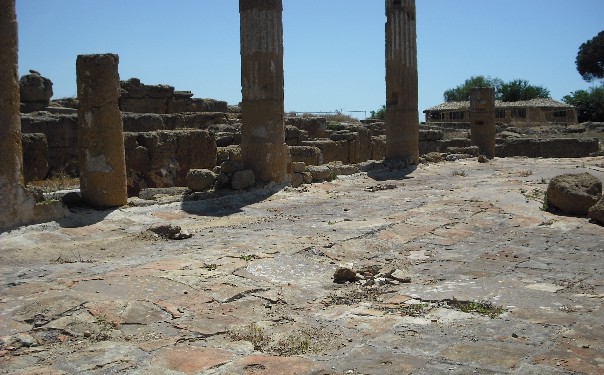The Romano-Hellenistic quarter
 The Romano-Hellenistic quarter discovered in Contrada San Nicola is only part of the ancient settlement, albeit an important part for the understanding of the urban plan of the city. About twenty houses of this quarter have been unearthed on the sloping terraces, arranged within a regular urban plan in three blocks (insulae) and delimited by the crossroads between the main east-west roads (decumani) and the minor north-south roads (cardines).
The Romano-Hellenistic quarter discovered in Contrada San Nicola is only part of the ancient settlement, albeit an important part for the understanding of the urban plan of the city. About twenty houses of this quarter have been unearthed on the sloping terraces, arranged within a regular urban plan in three blocks (insulae) and delimited by the crossroads between the main east-west roads (decumani) and the minor north-south roads (cardines).
The blocks of houses are superimposed on the urban plan of the late 6th and early 5th centuries B.C. and the roads correspond respectively to the Greek plateiai and stenopoi (parts of the present-day Via Passeggiata Archeologica coincide with some of these ancient roads).
The Hellenistic and Roman urban plan was developed starting from the 2nd-1st centuries B.C. and lasted till the 4th century A.D. The houses are of various kinds, including the Hellenistic type with large courtyards surrounded by a colonnade (peristyle) and the Pompeian type with an atrium and central basin for collecting rainwater.
The interior decorations of the houses are often exquisite: painted wall plasters are combined with a rich variety of mosaic floors with geometric, plant or animal motifs. Each house has been named on the basis of its architectural typology, of its interior decorations or of the artifacts found within it (e.g. House of the Peristyle, House of the Terracotta Atrium, House of the Mosaic of the Four Seasons, House of the Gazelle, House of the Abstractionist Master, House of the Dionysus, House of the Athlete, House of the Aphrodites).
The quarter was occupied until the 7th century A.D. when, during the Arab incursions, the settlement was moved up to the hill of Girgenti and the Valley was abandoned for defensive purposes.
Panoramic and historic view - Require Quicktime - By COMHERA
Commands: click left + mouse = move; CTRL = zoom-; Shift = zoom+; click = Historic view








